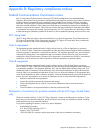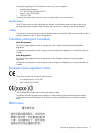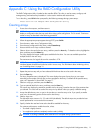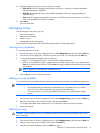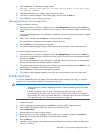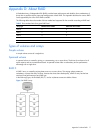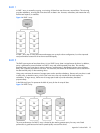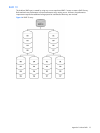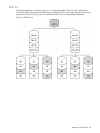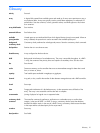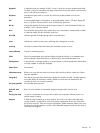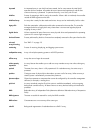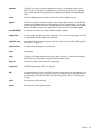
Appendix D: About RAID 18
RAID 1
A RAID 1 array is created by copying, or mirroring, all data from one drive onto a second drive. This mirroring
provides redundancy, ensuring that if one drive fails no data is lost. However, redundancy also means that only
half the total capacity is available.
Figure 4 A RAID 1 array
A RAID 1 array has no write performance advantage over a simple volume configuration, but it has improved
read performance because the drives share read load equally.
RAID 5
This RAID type requires at least three drives. As in a RAID 0 array, data is striped across the drives. In addition,
parity is generated to protect the data in a RAID 5 array and stored separately from data. The controller
generates parity every time data is written to the array, and the parity is distributed in stripes across all drives.
Parity uses a capacity equivalent to one drive. If a drive fails, the contents of the failed drive can be rebuilt from
the data and the parity on the remaining drives.
Using parity minimizes the amount of storage space used to provide redundancy. Because only one drive is used
to store parity, a three-drive array, which is the worst case, uses only one-third of the total capacity for
redundancy. In larger arrays, the fraction of storage space used to provide redundancy decreases
proportionately.
In the following figure, Pn represents the block of parity for the nth stripe of data.
Figure 5 A RAID 5 array
The write performance of a RAID 5 array is limited by the need to generate parity for every write. Read
performance is good because the load is spread equally across all the drives.



